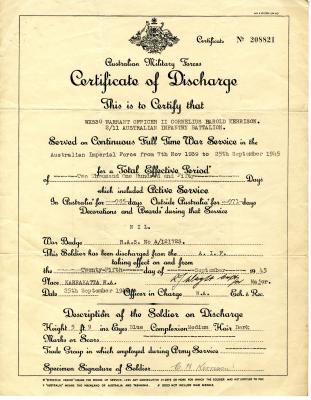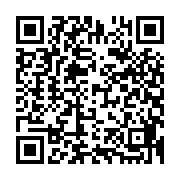AUSTRALIAN ARMY BADGE
A military badge that has been fashioned from the word Australia. The text is in a seriff font that is attaches each letter to one and another. The badge curves downwards from when viewed from the front. Two eyelets are attached on the top let and top right sides of the word. Two split rings are attached to the eyelets for fastening to a military uniform.
Part of the Kerrison collection donated by Constance Teague. Cornelius's father built a brick home in Jull Street mentioned in the book First Stage South. Cornelius was born in Armadale on the 17th of February 1906 and died in Bunbury on the 29th of September 1979.
The wallet was owned and used by Cornelius Kerrison when he was serving with Australian forces during World War II.
He enlisted age 33 on the 9th of November 1939 and served with the 2/11th Australian Infantry Battalion. The 2/11th served in North Africa and Cornelius saw action at Bardia (5th of January 1941), Tobruk (21st-22nd of January 1941) and part of the advance on Benghazi when on the 7th of February 1941 the Italian forces in North Africa surrended. An inguinal hernia saw Cornelius hospitalised and missed out of the 2/11th being part of the Crete campaign which saw a large contingent of the unit captured.
In February 1942 the remains of the 2/11 was sent back to Western Australia where they engaged in defensive duties before being transfered to Queensland in 1943. In November 1944 the 2/11th was sent to New Guinea where Cornelius fell seriously ill again and was eventually discharged from the army on the 25th September 1945. Cornelius spent the rest of his life in Bunbury
Details
Details
HIGH
This collection represents Cornelius Kerrison's, who was born and raised in Armadale, time in the military during the Second World War. The items used by Cornelius during his service in the Australian Armed forces. Kerrison served with the 2/11th Battalion, 6th Division and saw action in North Africa including Tobruk. An illness meant he was in hospital when the 2/11th was captured in Crete in May 1941. He later served in New Guinea but continuing medical issues saw him discharged and return to Western Australia and move to Bunbury.
City of Armadale - History House
City of Armadale - History House
Other items from City of Armadale - History House
- ARMY DOG TAGS
- RETURNED FROM ACTIVE SERVICE BADGE
- ARMY CHEVRONS X 2
- UNIT PATCHES WW2 X 2
- BATTALION PATCH WW2
- CERTIFICATE OF DISCHARGE
- SILVIA DOLL
- ARMADALE TRAIN STATION MEMORABILIA
- AUSTRALIAN OF THE YEAR AWARD 2005 CERTIFICATE
- 25YRS OF VIENNA POPS PICTURE
- ARMADALE AQUATIC CENTRE BRASS PLAQUE
- ARMADALE AQUATIC CENTRE NO DIVING TILE

